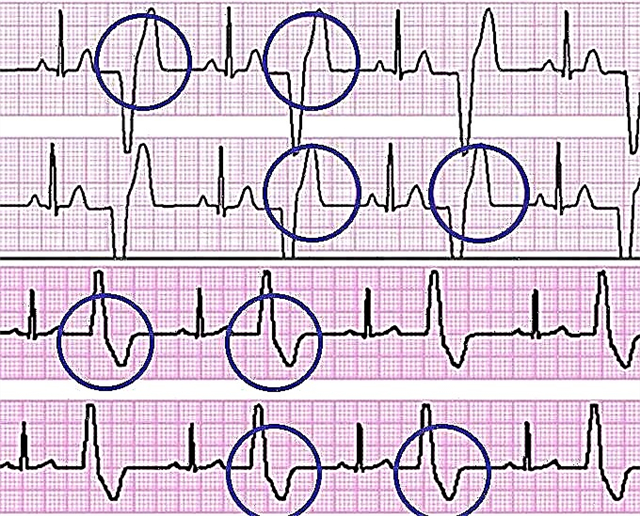Otitis media is a serious otolaryngological disease in which catarrhal processes occur in the ear. The danger of the disease lies in the risk of developing serious complications, which include mastoiditis, labyrinthitis, meningitis, conductive hearing loss, etc. To prevent complications, it is necessary to provide not only competent and timely treatment of ear pathology, but also proper care for the patient.
Is it possible to walk with otitis media? The answer to the question largely depends on the clinical manifestations of ENT disease, its type and stage of development. Even if there is a positive answer, the possibility of a walk depends on the weather conditions outside, the season, the presence of concomitant diseases and the age of the patient.
When you shouldn't walk

The principles of treatment of the disease and possible restrictions in daily life depend on the stage of development of otitis media. The initial stage is characterized by a slight manifestation of local and general symptoms. A person feels discomfort in the area of the affected ear, which eventually gives way to aching or throbbing pain. This indicates the presence of inflammatory processes in the mucous membranes.
The intensive development of pathogenic flora leads to intoxication of the body and exacerbation of pathology. Is it possible to walk with otitis media in the acute course of the disease? Experts strongly advise against going outside if you have the following symptoms:
- hyperthermia;
- ear congestion;
- hearing loss;
- difficult swallowing;
- noises in the ear;
- shooting pains;
- dizziness;
- nausea.
In most cases, ENT disease develops against the background of an infectious lesion of the nasopharynx, which occurs with the development of pharyngitis, laryngitis, tonsillitis, sinusitis, etc. During the active phase of the development of the infection, one should refrain from going outside and even short-term visits to public places.
Otitis media without fever
Is it possible to walk with otitis media without fever? The absence of temperature during the development of ear pathology may indicate a subsidence of inflammatory processes and the onset of remission in chronic otitis media. It is extremely rare that hyperthermia is observed with the development of the so-called serous otitis media, which is characterized by the formation of a sterile transudate in the ear cavity. In all these cases, outdoor walks are recommended by doctors.
In all these cases, outdoor walks are recommended by doctors.
It is undesirable to heavily wrap a child suffering from ENT disease before going for a walk. Any draft with the appearance of sweat can provoke hypothermia and exacerbation of the disease.
In most cases, the restrictions on walking are removed approximately 6-7 days after the development of the disease. However, this rule applies only to those cases when the pathology has developed independently, and not against the background of a severe infectious lesion of the body.
Arguments against
Subfebrile temperature is a direct contraindication to going outside. This is especially true for young children whose immune defenses are weakened by infection. A slight increase in temperature indicates the presence of catarrhal processes in the organ of hearing. A symptom signals an attempt by the body to weaken the reproductive ability of pathogens, which would lead to a decrease in their number.
If the thermometer exceeds 38 degrees, you need to seek help from a doctor. At the same time, experts insist on calling a doctor at home, since going outside in this state can provoke serious complications. But even in the absence of hyperthermia, otolaryngologists do not recommend taking walks in the following cases:
- purulent discharge from the ear;
- the presence of diarrhea;
- recurrent ear pain;
- persistent nausea or vomiting;
- bad weather conditions (rain, wind).
Chronic otitis media and walking
Is it possible to go outside with otitis media? Chronic otitis media differs from the acute form by the absence of hyperthermia, fever and other local manifestations. However, if favorable factors arise, an exacerbation of the disease is possible. To prevent complications after a walk, the following conditions must be met:
- lack of high temperature;
- calm and not rainy weather;
- moderate physical activity;
- warm clothes that prevent hypothermia;
- the presence of a headdress covering the ears;
- short stay on the street (no more than 40 minutes).
With the development of the disease in a child, it is necessary to prevent intense physical activity that could provoke the release of sweat.
Even a short stay in a draft can exacerbate catarrhal processes in the ear.
Possible complications
Failure to comply with the above rules can cause serious complications. Hypothermia leads to the appearance of inflammatory processes in the mucous membranes of the middle ear, which is fraught with stenosis of the ear canal. In this case, the drainage of the ear cavity is disturbed, as a result of which serous exudate accumulates in it.
Common negative effects of walking include:
- Conductive hearing loss is a serious complication caused by hearing impairment. It occurs due to the degradation of an inflamed ear membrane (myringitis) or impaired conduction of sound signals by the auditory ossicles;
- purulent inflammation - the formation of abscesses in the epithelial tissues of the middle and inner ear, provoked by the development of pathogens, i.e. microbes, viruses, yeast-like fungi, etc .;
- damage to bone tissue - destruction of the cells of the mastoid process in the middle ear, provoked by suppuration;
- labyrinthitis - inflammatory processes in the semicircular canals and the cochlea, which are the main parts of the inner ear. It leads to the appearance of dysfunction of the auditory analyzer and the vestibular apparatus.
Untimely relief of inflammatory processes in the organ of hearing can lead to more serious consequences. If the deep layers of the mucous membranes of the middle and inner ear are affected, meningitis or mastoiditis may develop.
Precautionary measures
Is it possible to walk with otitis media in winter? In the cold season, outdoor walks should be reduced to a minimum. Before going outside, put a cotton swab in a sore ear and put on a warm hat. In the chronic course of the disease, drafts at home should be avoided, however, the room should be ventilated at least 1-2 times a day.
Until the perforations in the ear membrane are completely healed, you should refrain from flying an airplane, going to a bathhouse or swimming pool.
Experts warn that complete isolation can lead to poor health. Periodic walks in the fresh air will promote recovery. An exception applies to diffuse otitis externa caused by infection. During the period of exacerbation of the pathology, it is undesirable not only to walk, but also to perform water procedures.



